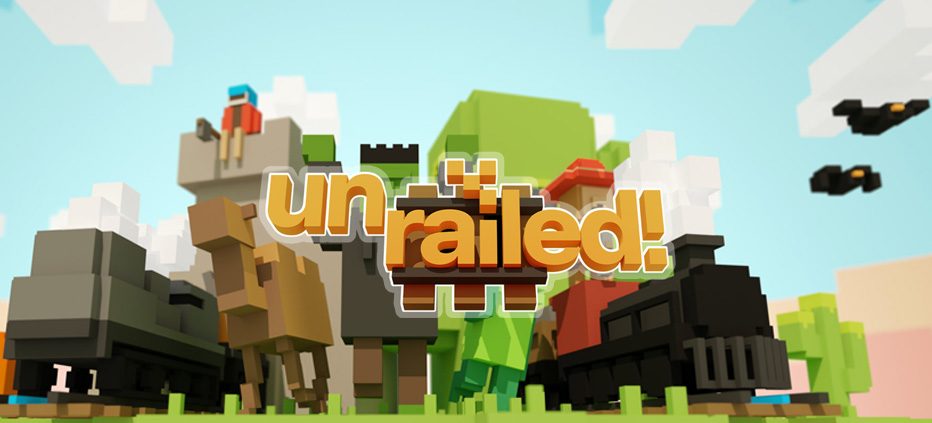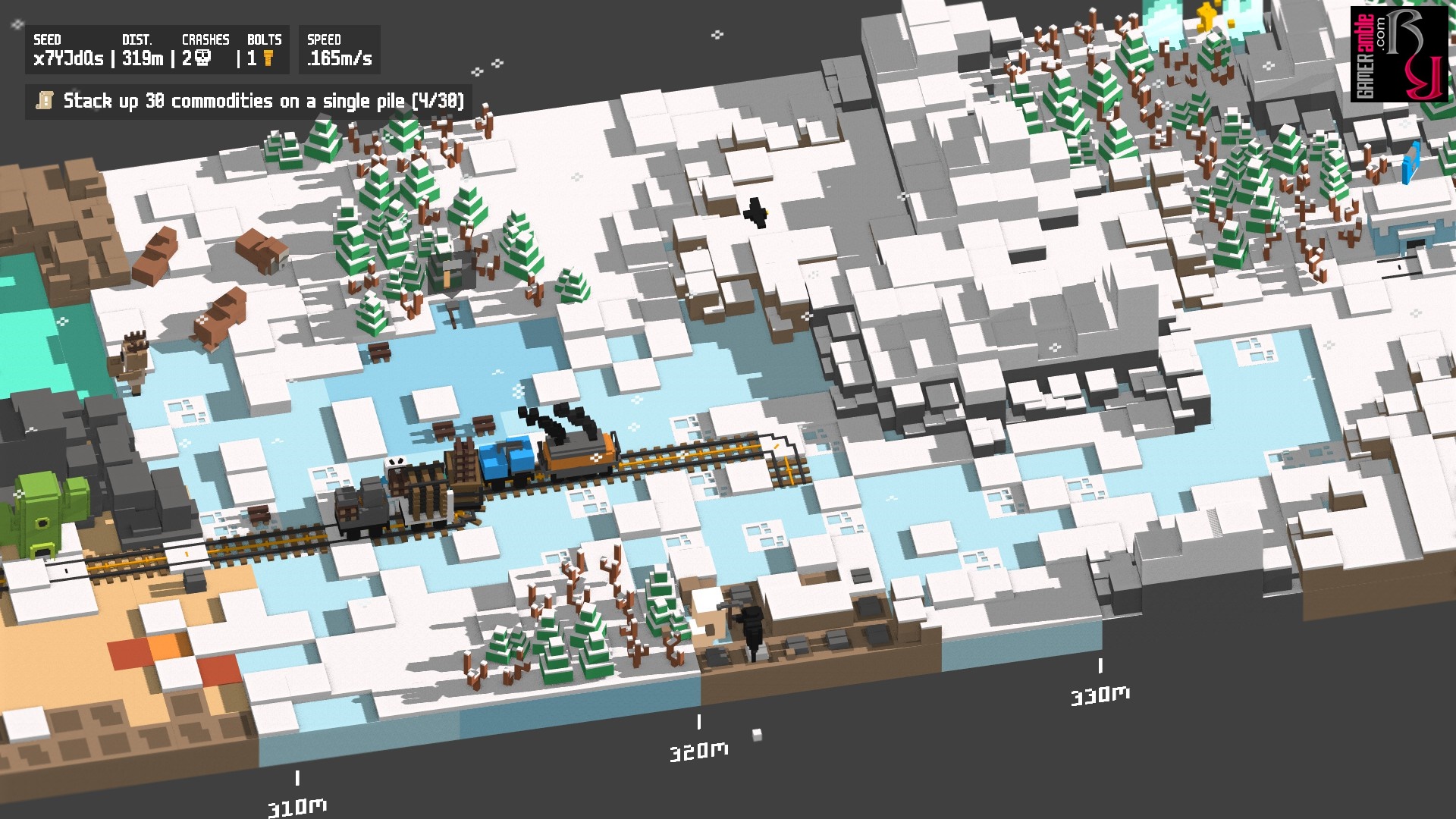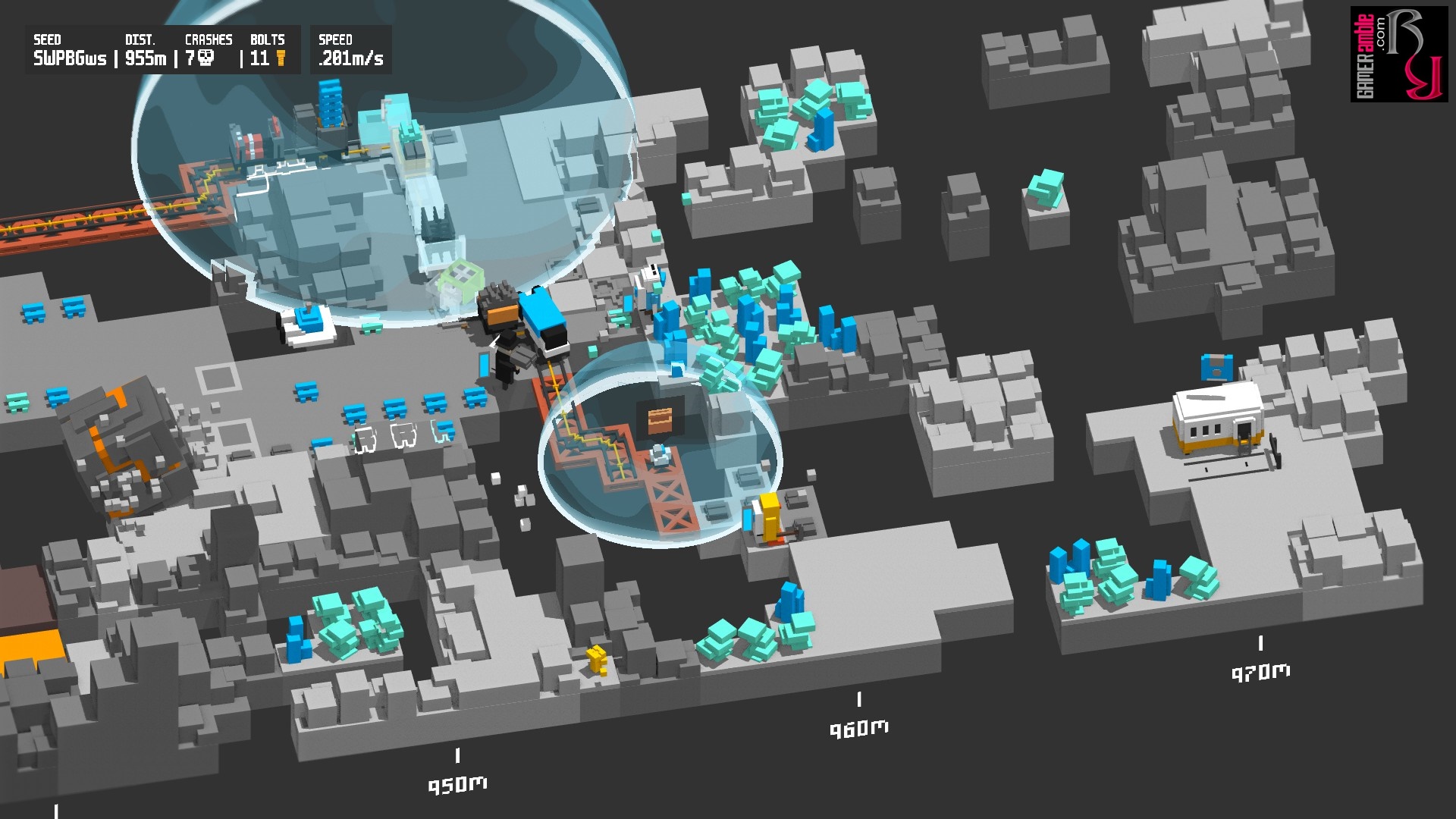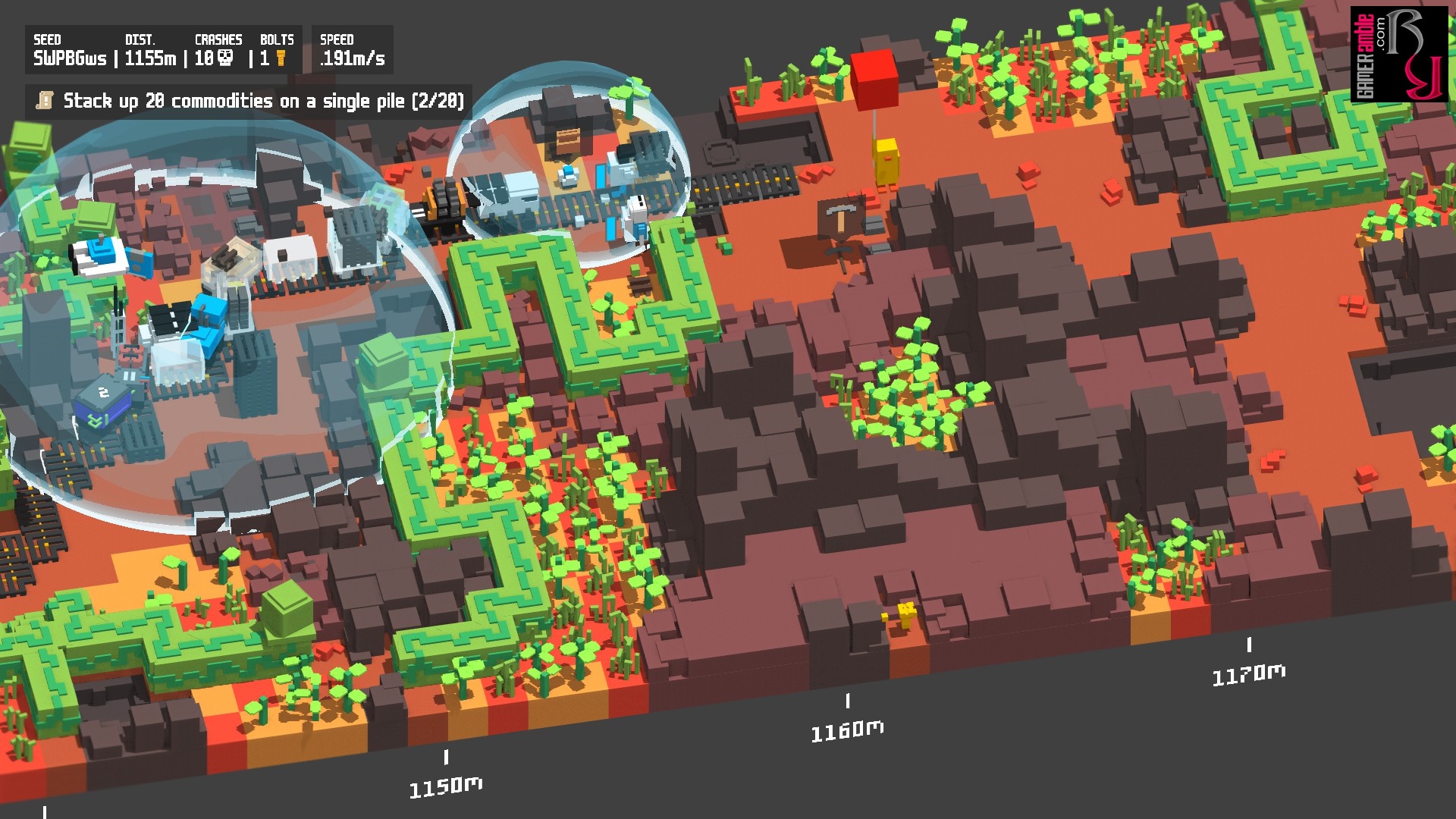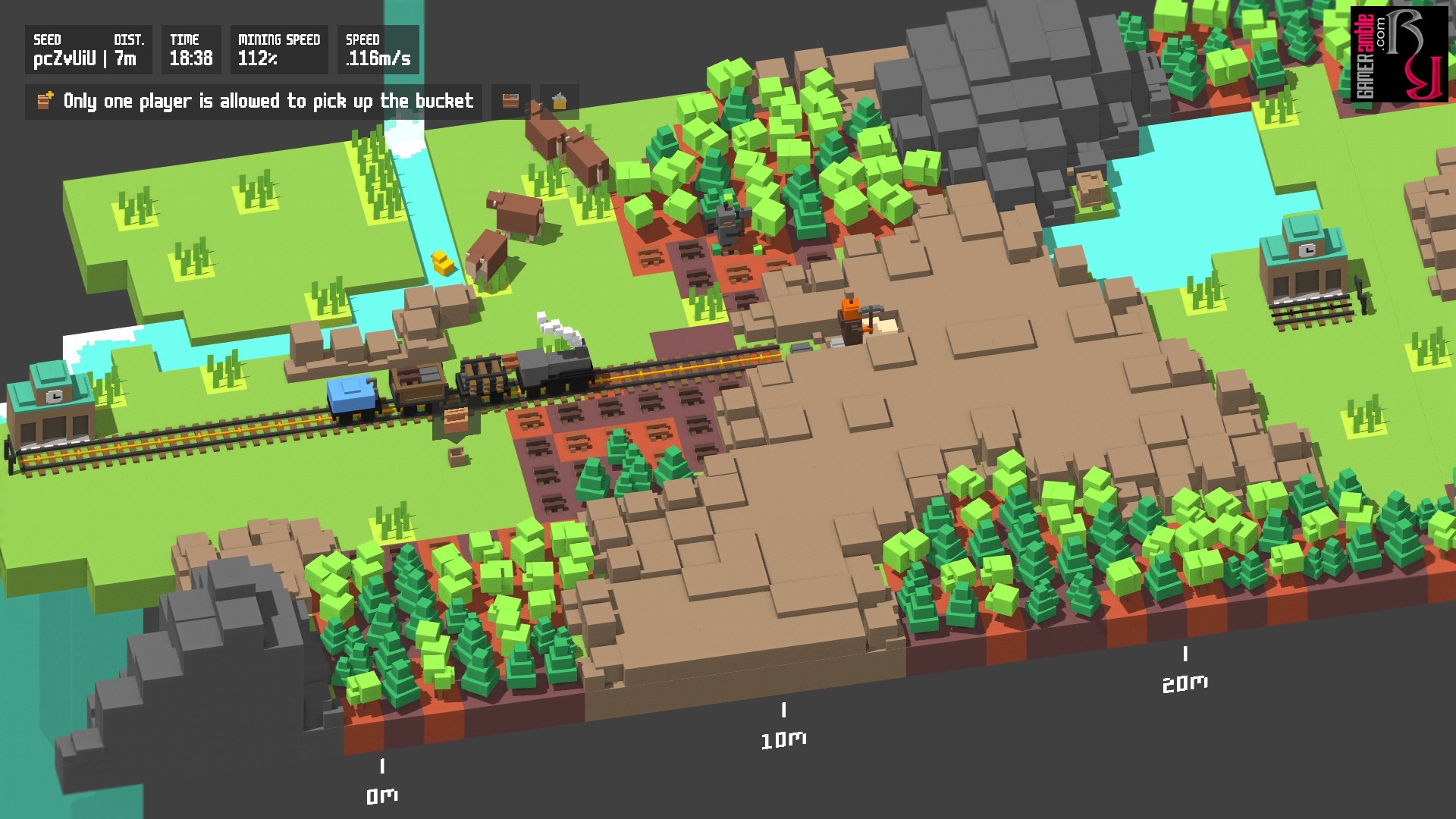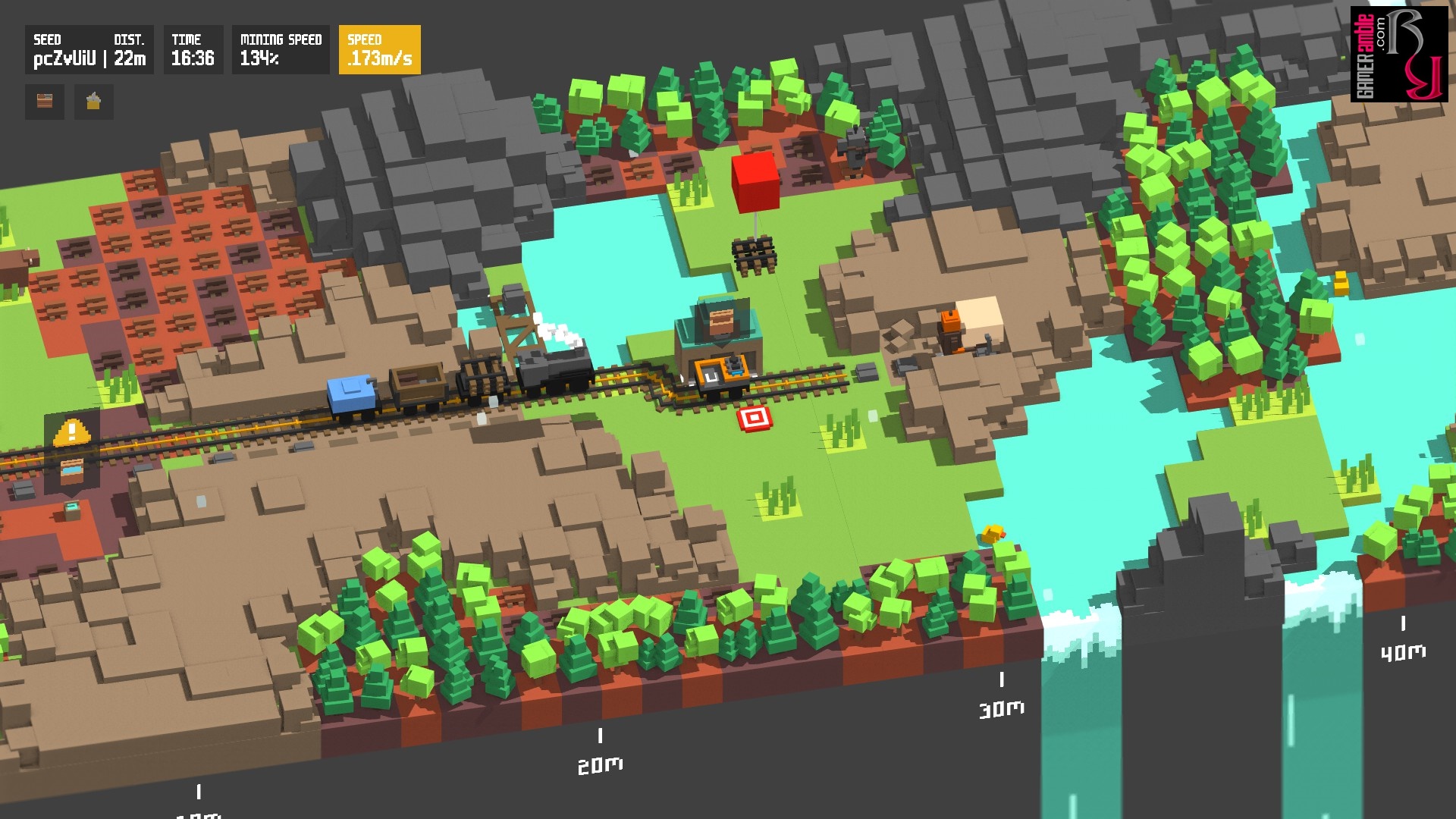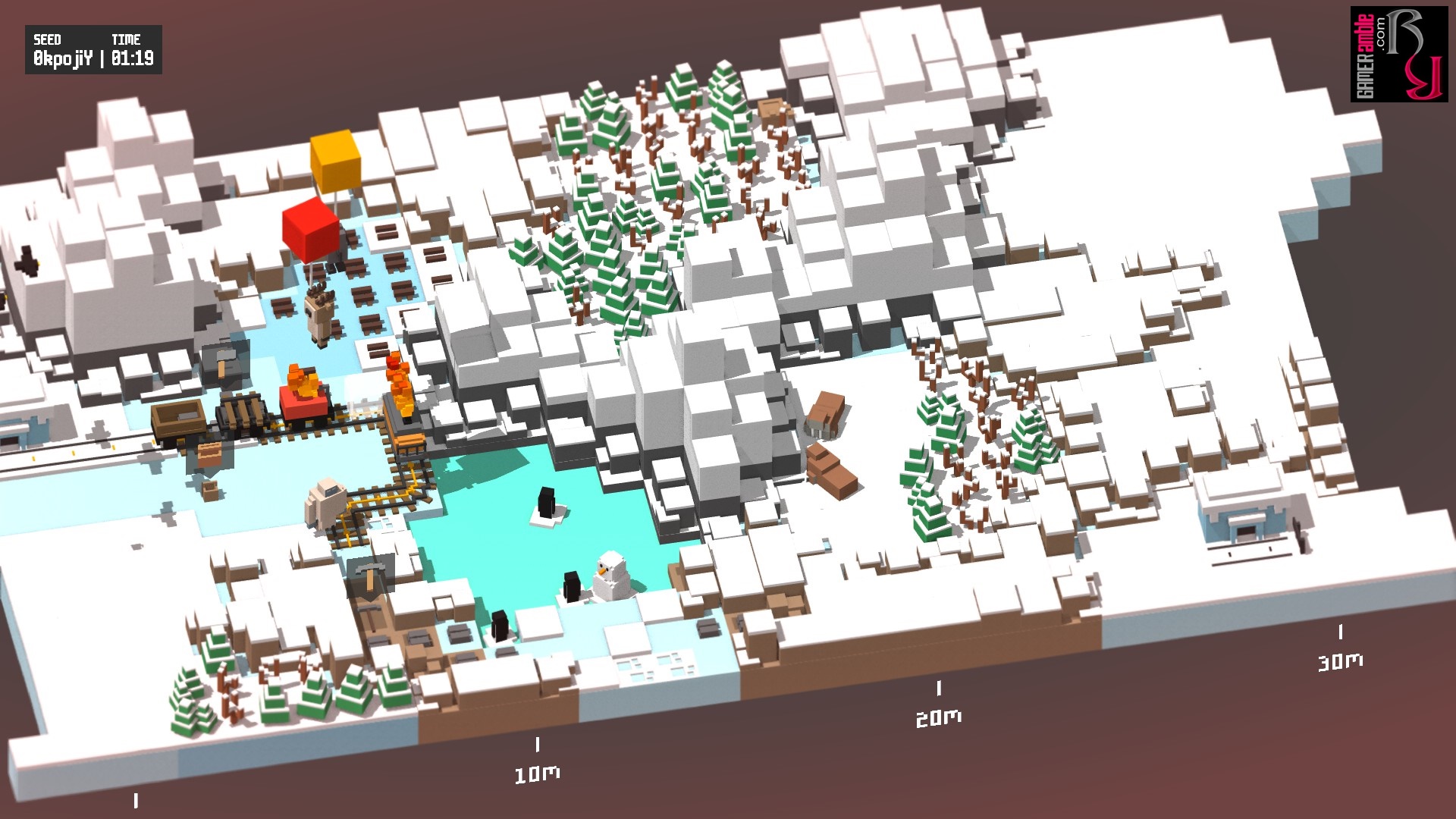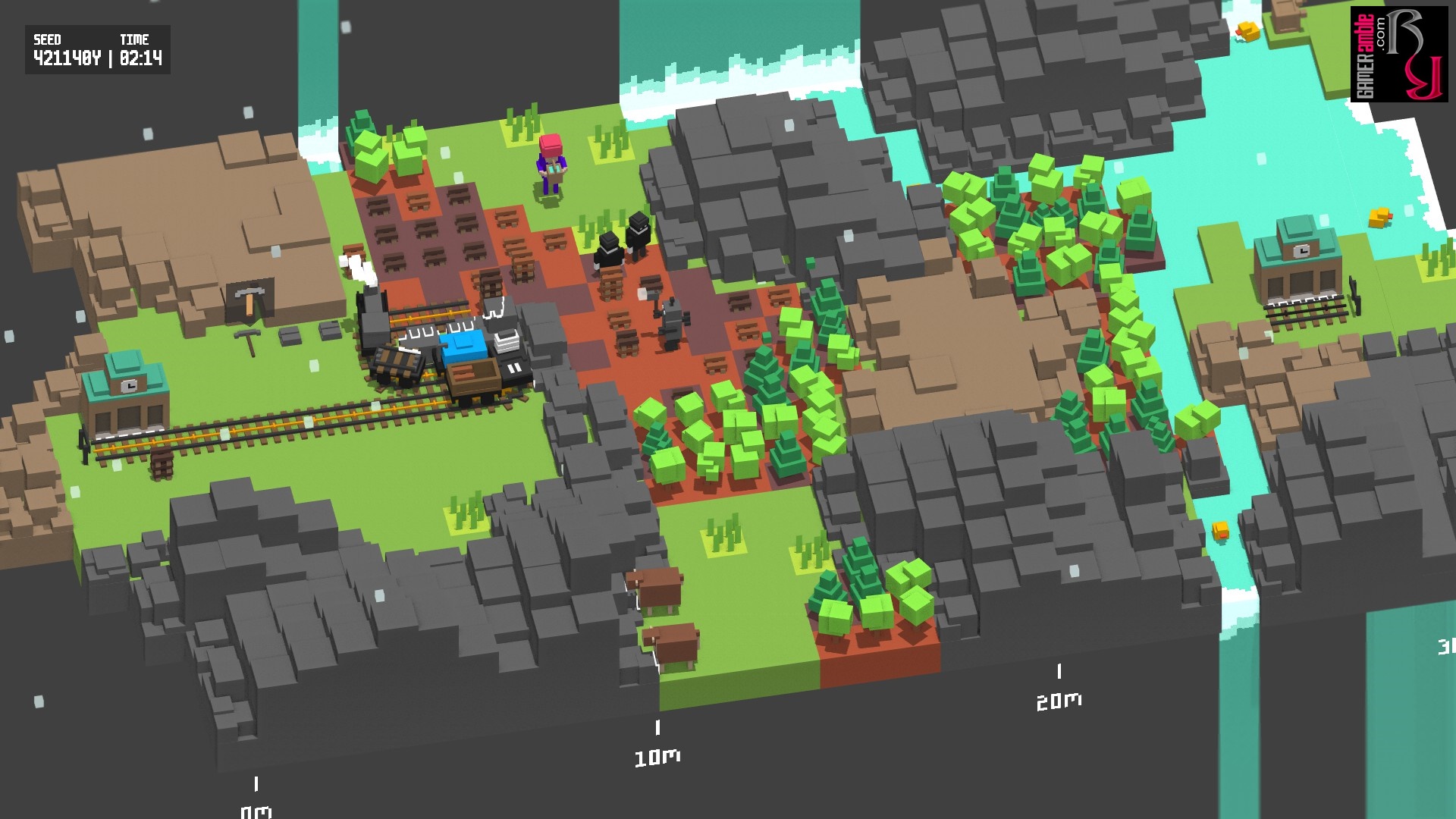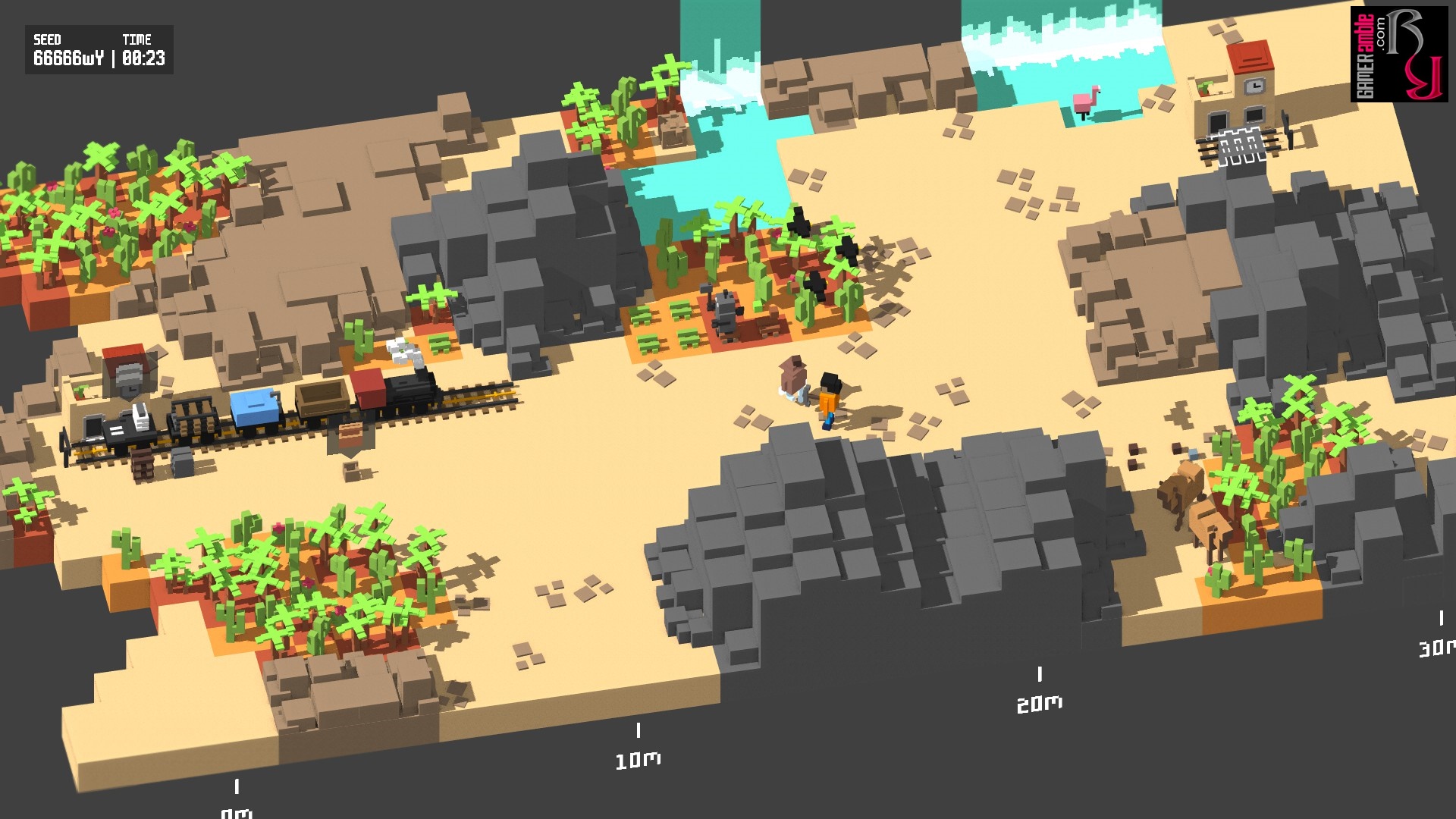Unrailed!
Developer: Indoor Astronaut | Publisher: Daedalic Entertainment | Release Date: 2020 | Genre: Action / Casual / Indie | Website: Official Website | Purchase: Steam
The popularity of survival games, especially the co-op variety, has seen players brave everything from hellish jungles to frozen landscapes and perilous deserts. Unrailed by Indoor Astronaut doesn’t just restrict itself to one of these locations but uses all of them along with more exotic fare such as hell, space, Mars, and beyond. However, instead of fighting for their own survival, players in Unrailed are tasked with preserving a train.
The goal of Unrailed is to guide a train from station to station without crashing, a relatively simple task that is unfortunately complicated by a couple of factors. First up is the rather inhospitable terrain mentioned earlier, but even more pressing is the fact that the train never stops moving. This wouldn’t have been so bad if it wasn’t up to players to manufacture new tracks and place them in front of the moving train before it derails. Throw in some unique obstacles and challenges on each of the game’s biomes, and the result is a game that is as addictive as it is infuriating at times.
While it isn’t quite as action-packed, it’s hard not to compare the premise of Unrailed to the train chase sequence in the Wallace and Grommit short, The Wrong Trousers. Just as Grommit was left frantically placing train tracks in front of a speeding train carriage to avoid disaster, players must do the same, albeit without the luxury of being on the train or having an unlimited supply of tracks. Instead, players have to chop down trees and mine ore, which is then placed on a special wagon that produces the needed tracks. The game takes pity on players attempting to do all of this alone by providing them with a bot companion, but it was clearly designed for 2 to 4 players either locally or in online co-op.
Unrailed features several modes, such as Sandbox, Versus, Quick, and Time, but the real challenge lies in Endless. Here, players start in the plains before moving through new biomes such as desert, snow, hell, space, and beyond each time they upgrade their train engine. The world is procedurally generated and throws more and more curveballs at players depending on which of the four difficulty settings was selected. In addition to a day and night cycle and weather effects that can impact visibility, each biome has its own challenges, ranging from resource-stealing bandits to terrain that slows players down and even a lack of oxygen. The most terrifying is hell, which features tremors that can skew or even flip players’ viewpoints upside down for brief periods.
The game keeps things very simple by only providing players with three tools: an axe, a pickaxe, and a bucket. These can be used to chop down trees for wood, mine rocks for ore, and collect water respectively. Timber and ore are needed to create tracks but must also be cleared away for the tracks to be placed on the ground. Water is essential for dousing the train, which has a habit of overheating and catching fire. Since there is only one tool for each job, players must divide tasks or be coordinated enough to switch between them as needed. It is also important not to lose any of these tools, as there’s no way to go back and retrieve them once the screen scrolls past the spot where they were dropped.
Chopping wood, mining ore, dousing fires, and putting down tracks sound very easy on paper, especially with a large enough team, but things have a habit of going pear-shaped in Unrailed very quickly. Along with the above hazards, players might also encounter obstacles such as unminable blocks, chasms, and lakes or rivers. Some can be avoided by going past them, while others require players to use precious resources to build bridges. All of this comes with the added pressure of the train slowly speeding up after each station it reaches. Eventually, the speed begins to reach a critical point, and the only way to slow it down is to purchase a new engine. This is done with the bolts that can be found tucked away on hard-to-reach spots on each map. Players can also earn additional bolts by completing optional challenges, such as not crafting tracks for a specified amount of time or completing a level without dashing into each other. Purchasing a new engine has a lot of benefits, such as resetting the speed and allowing players to add more carriages. Still, it also means players will automatically progress to the next, usually much harder biome.
To offer further assistance, players who have gathered enough bolts can also use them to buy new carriages for the train or upgrade existing ones. These carriages have their benefits, such as the tank that can hold water, the ghost carriage that allows players to pass through it, and the explosives carriage that enables players to craft dynamite. However, remember that more carriages mean a longer train and many wagons require wood or ore to power them. The odds are very much against players in Unrailed, but the biggest danger by far is your own team members. Players can block each other or cause carried items to be dropped by dashing into each other and blow each other up accidentally with dynamite. Players who are killed in some way respawn after a few seconds, but time is precious in Unrailed, and dying too often usually means vitally important tasks, like placing tracks or clearing obstacles, are not done on time. In addition, a lot of progress is lost if the train inevitably derails, and while it is possible to save at stations, reloading also erases the save. This means that the amount of blame-shifting and arguments that usually ensue between players after a crash can be pretty humorous. Like the best party games, Unrailed is a game that can sorely test friendships if played often enough.
With its voxel art style and isometric overhead view, the levels in Unrailed look like tiny Minecraft dioramas at times. The zoomed-out perspective helps with seeing what obstacles are ahead but also makes it harder to see close-up details. This can lead to disaster if players are not careful, as one tiny piece of rock next to the train can mean the difference between reaching the tracks on time or having to wait while the person wielding the pickaxe scrambles to remove it first. The game has a wacky assortment of characters that can be unlocked, including dinosaurs and penguins, so picking something easy to spot in all the chaos is recommended. We also enjoyed the soundtrack, as each biome has its own music, and some tracks are downright catchy. The sound effects are sparse but good, and a handy alert plays whenever a forgotten tool is about to vanish offscreen. This doesn’t apply to resources left on the ground, so players must pay attention to those. Unrailed is perfectly playable with just a keyboard, and your character automatically mines or chops wood if equipped with the correct tool and close enough to the resources. Just a single button is needed to perform tasks like picking things up, dropping them, and placing tracks, too. This can sometimes be a little annoying if you accidentally pick up the wrong stuff or drop your tools by mistake. Finally, an emoji wheel is available to communicate with other players if voice chat is not an option.
Overall, Unrailed is a very entertaining game despite the simple gameplay. It’s straightforward to pick up and play, but the procedural nature of the levels means that there is rarely a dull moment when playing on higher difficulties. Some players might find the harsh penalty for failure a source of frustration, but the high stakes make reaching each station much more rewarding. It is the type of game that can go from calm to chaos in the blink of an eye, and there were plenty of instances where we were left shaking our heads in disbelief at actually managing to turn a situation around in time. Playing Unrailed alone with a bot is serviceable enough, but it’s best played with friends to experience the game as intended. Just make sure everyone on the team can work well together under pressure or has thick skin if they can’t!
System Requirements
- Minimum PC System Requirements
- Recommended PC System Requirements
- Minimum Mac OS X System Requirements
- Recommended Mac OS X System Requirements
- Minimum SteamOS + Linux System Requirements
- Recommended SteamOS + Linux System Requirements
- Requires a 64-bit processor and operating system
- OS: Windows 7
- Processor: 2 GHz Dual Core
- Memory: 4 GB RAM
- Graphics: Intel HD Graphics 520
- Network: Broadband Internet connection
- Storage: 2 GB available space
- Requires a 64-bit processor and operating system
- Requires a 64-bit processor and operating system
- OS: macOS Mojave
- Processor: 2 GHz Dual Core
- Memory: 4 GB RAM
- Graphics: Intel HD Graphics 5000
- Network: Broadband Internet connection
- Storage: 2 GB available space
- Additional Notes: Only wireless gamepads are supported.
- Requires a 64-bit processor and operating system
- Requires a 64-bit processor and operating system
- OS: Ubuntu 18.04
- Processor: 2 GHz Dual Core
- Memory: 4 GB RAM
- Graphics: Intel HD Graphics 520
- Network: Broadband Internet connection
- Storage: 2 GB available space
- Requires a 64-bit processor and operating system

